-
BackX
-
Components
-
-
Category
-
Semiconductors
- Diodes
- Thyristors
-
Electro-insulated Modules
- Electro-insulated Modules | VISHAY (IR)
- Electro-insulated Modules | INFINEON (EUPEC)
- Electro-insulated Modules | Semikron
- Electro-insulated Modules | POWEREX
- Electro-insulated Modules | IXYS
- Electro-insulated Modules | POSEICO
- Electro-insulated Modules | ABB
- Electro-insulated Modules | TECHSEM
- Go to the subcategory
- Bridge Rectifiers
-
Transistors
- Transistors | GeneSiC
- SiC MOSFET Modules | Mitsubishi
- SiC MOSFET Modules | STARPOWER
- Module SiC MOSFET ABB’s
- IGBT Modules | MITSUBISHI
- Transistor Modules | MITSUBISHI
- MOSFET Modules | MITSUBISHI
- Transistor Modules | ABB
- IGBT Modules | POWEREX
- IGBT Modules | INFINEON (EUPEC)
- Silicon Carbide (SiC) semiconductor elements
- Go to the subcategory
- Gate Drivers
- Power Blocks
- Go to the subcategory
- Electrical Transducers
-
Passive components (capacitors, resistors, fuses, filters)
- Resistors
-
Fuses
- Miniature Fuses for electronic circuits - ABC & AGC Series
- Tubular Fast-acting Fuses
- Time-delay Fuse Links with GL/GG & AM characteristics
- Ultrafast Fuse Links
- Fast-acting Fuses (British & American standard)
- Fast-acting Fuses (European standard)
- Traction Fuses
- High-voltage Fuse Links
- Go to the subcategory
- Capacitors
- EMI Filters
- Supercapacitors
- Power surge protection
- TEMPEST emission revealing filters
- Go to the subcategory
-
Relays and Contactors
- Relays and Contactors - Theory
- 3-Phase AC Semiconductor Relays
- DC Semiconductor Relays
- Controllers, Control Systems and Accessories
- Soft Starters and Reversible Relays
- Electromechanical Relays
- Contactors
- Rotary Switches
-
Single-Phase AC Semiconductor Relays
- AC ONE PHASE RELAYS 1 series| D2425 | D2450
- One phase semiconductor AC relays CWA and CWD series
- One phase semiconductor AC relays CMRA and CMRD series
- One phase semiconductor AC relays - PS series
- Double and quadruple semiconductor AC relays - D24 D, TD24 Q, H12D48 D series
- One phase semiconductor relays - gn series
- Ckr series single phase solid state relays
- One phase AC semiconductor relays for DIN bus - ERDA I ERAA series
- 150A AC single phase relays
- Rail Mountable Solid State Relays With Integrated Heat Sink - ENDA, ERDA1 / ERAA1 series
- Go to the subcategory
- Single-Phase AC Semiconductor Relays for PCBs
- Interface Relays
- Go to the subcategory
- Cores and Other Inductive Components
- Heatsinks, Varistors, Thermal Protection
- Fans
- Air Conditioning, Accessories for Electrical Cabinets, Coolers
-
Batteries, Chargers, Buffer Power Supplies and Inverters
- Batteries, Chargers - Theoretical Description
- Modular Li-ion Battery Building Blocks, Custom Batteries, BMS
- Batteries
- Battery Chargers and Accessories
- Uninterruptible Power Supply and Buffer Power Supplies
- Inverters and Photovoltaic Equipments
- Energy storage
- Fuel cells
- Lithium-ion batteries
- Go to the subcategory
-
Automatics
- Spiralift Lifts
- Futaba Drone Parts
- Limit Switches, Microswitches
- Sensors, Transducers
-
Infrared Thermometers (Pyrometers)
- IR-TE Series - Water-proof Palm-sized Radiation Thermometer
- IR-TA Series - Handheld Type Radiation Thermometer
- IR-H Series - Handheld Type Radiation Thermometer
- IR-BA Series - High-speed Compact Radiation Thermometer
- IR-FA Series - Fiber Optic Radiation Thermometer
- IR-BZ Series - Compact Infrared Thermometers
- Go to the subcategory
- Counters, Time Relays, Panel Meters
- Industrial Protection Devices
- Light and Sound Signalling
- Thermographic Camera
- LED Displays
- Control Equipments
- Go to the subcategory
-
Cables, Litz wires, Conduits, Flexible connections
- Wires
- Cable feedthroughs and couplers
- Litz wires
- Cables for extreme applications
- Sleevings
-
Braids
- Flat Braids
- Round Braids
- Very Flexible Flat Braids
- Very Flexible Round Braids
- Cylindrical Cooper Braids
- Cylindrical Cooper Braids and Sleevings
- Flexible Earthing Connections
- Galvanized and Stainless Steel Cylindrical Braids
- PCV Insulated Copper Braids (temp. up to 85C)
- Flat Aluminium Braids
- Junction Set - Braids and Tubes
- Go to the subcategory
- Traction Equipment
- Cable Terminals
- Flexible Insulated Busbars
- Flexible Multilayer Busbars
- Cable Duct Systems
- Go to the subcategory
- View all categories
-
Semiconductors
-
-
- Suppliers
-
Applications
- CNC Machine Tools
- DC and AC Drives (Inverters)
- Energetics
- Energy bank
- Equipment and Components for Hazardous Areas [Ex]
- Equipment for Distribution, Control and Telecommunications Cabinets
- HVAC Automation
- Induction Heating
- Industrial Automation
- Industrial Protective Devices
- Machines for Drying and Wood Processing
- Machines for Thermoforming Plastics
- Mining, Metallurgy and Foundry
- Motors and Transformers
- Power Supplies (UPS) and Rectifier Systems
- Printing
- Temperature Measurement and Regulation
- Test and Laboratory Measurements
- Tram and Railway Traction
- Welding Machines
-
Assembly
-
-
Inductors
-
-
Induction devices
-
-
Service
-
- Contact
- Zobacz wszystkie kategorie
Optimization of Electronic Circuits – The Role of Ferrite Cores in EMI Filtering and Power Supply

Ferrite cores are essential components in advanced electronic circuits, particularly in the context of eliminating electromagnetic interference (EMI) and optimizing power supply systems. Their magnetic properties and wide range of applications make them indispensable in PCB-based system designs. Modern requirements for miniaturization of electronic devices and increased efficiency necessitate advanced filtration technologies, where ferrite cores play a crucial role.
Challenges in EMI Filtering
Electromagnetic interference poses a significant threat to the proper functioning of electronic circuits, especially in environments with a high density of devices. Filters utilizing ferrite cores enable effective attenuation of interference, eliminating its impact on sensitive components. Challenges in this field include meeting EMC (Electromagnetic Compatibility) standards, which require elements that effectively reduce conducted and radiated interference. Miniaturization of filtering components is essential in modern devices such as IoT and medical electronics, which demand compact solutions without compromising efficiency. Additionally, modern devices generate interference over a wide frequency range, necessitating the use of cores with appropriately selected magnetic properties.
Ferrite Cores – Technological Basics
Ferrite cores are ceramic materials characterized by high electrical resistance and specific magnetic properties. As a result, they are used in a variety of filtration and power applications. Two main classes of ferrites are distinguished: soft and hard. In the context of EMI filtering, soft ferrites (e.g., MnZn, NiZn) are most commonly used, as they offer low hysteresis losses. Cores come in various forms, such as toroids, E-shapes, or rings with special profiles, affecting their magnetic properties and attenuation efficiency.
Ferrite Cores in EMI Filters
EMI filters with ferrite cores are used to eliminate conducted interference both in power lines and signal lines. Ferrite bead chokes are miniature components mounted directly on PCB traces, which attenuate high-frequency interference while maintaining signal integrity in low-frequency ranges. LC filters with ferrite cores combine inductors on ferrite cores with capacitors, creating effective low-pass filters that isolate devices from power network noise. Ferrite cores are also used in power and signal cables to suppress interference introduced by the external environment.
Optimizing Power Systems with Ferrite Cores
Ferrite cores are also used in transformers and voltage converters, improving their efficiency and stability. Thanks to ferrite cores, pulse transformers can operate at high frequencies, allowing for size reduction and increased energy efficiency. Inductors with ferrite cores play a crucial role in reducing power losses and improving the dynamic characteristics of DC-DC converters. Optimizing designs requires using cores with appropriate parameters, such as a high saturation flux density, to prevent saturation at high currents.
Practical Aspects of Ferrite Core Selection
When designing filters and power systems using ferrite cores, engineers must consider key parameters such as operating frequency and energy losses. Proper selection of ferrite material depends on the range of interference frequencies or power signals. Device miniaturization requires compact cores with high magnetic efficiency.
Future Trends in Ferrite Core Applications
Technological advancements in materials and manufacturing technologies open up new possibilities for ferrite core applications. Research on nanostructured ferrites and composites leads to the production of cores with better attenuation characteristics and lower losses. In IoT devices, cores must meet the demands of small sizes while maintaining high EMI filtering efficiency. Increasingly, the integration of magnetic functions at the chip level is changing the way ferrite cores are used.
Conclusion
Ferrite cores play a crucial role in eliminating EMI interference and optimizing power systems. Their application in research and development projects enables the creation of more reliable and efficient electronic devices. Selecting the right cores tailored to specific project requirements is one of the most important elements of the R&D design process.
References:
[1] https://www.coilmaster.com.tw/pl/product/C2LRU100BLF.html
[2] https://hilelectronic.com/pl/design-power-pcb/
[3] https://resources.altium.com/pl/p/how-do-ferrite-beads-work-and-how-do-you-choose-right-one
[4] https://propcb.pl/technologie/
[5] https://ep.com.pl/rynek/wybor-konstruktora/14534-masa-problemow-z-obwodami-zasilania-na-plytkach-pcb-prawidlowe-prowadzenie-obwodu-masy-na-plytkach-pcb-ukladow-cyfrowo-analogowych
[6] https://www.instalacjebudowlane.pl/9256-26-76-wentylatory-ec-do-wydajnego-chlodzenia-w-centrach-danych.html
[7] https://elektronikab2b.pl/technika/54036-projektowanie-pcb-dla-ukladow-duzej-mocy
[8] https://resources.altium.com/pl/p/what-return-current-path-pcb
Related products
Related posts
 Thermally conductive materials in power storages
Thermally conductive materials in power storages
 Folia samoprzylepna z wypełnieniem ceramicznym
Folia samoprzylepna z wypełnieniem ceramicznym
 Heat management - Challenges for electric vehicles
Heat management - Challenges for electric vehicles




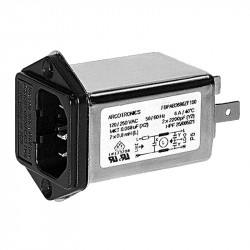
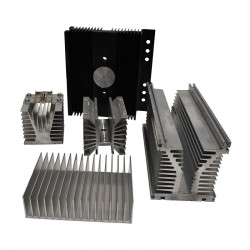
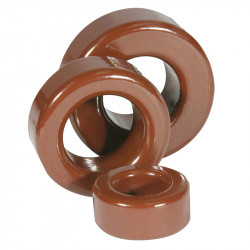
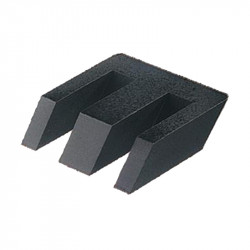
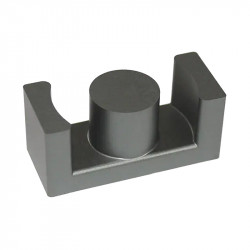
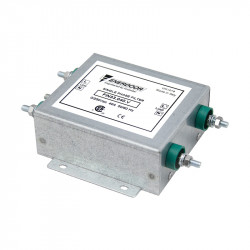
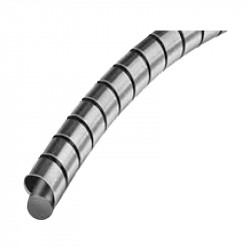
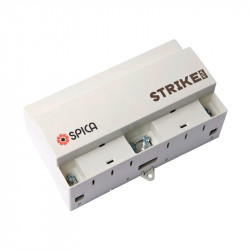
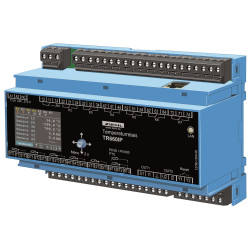

Leave a comment